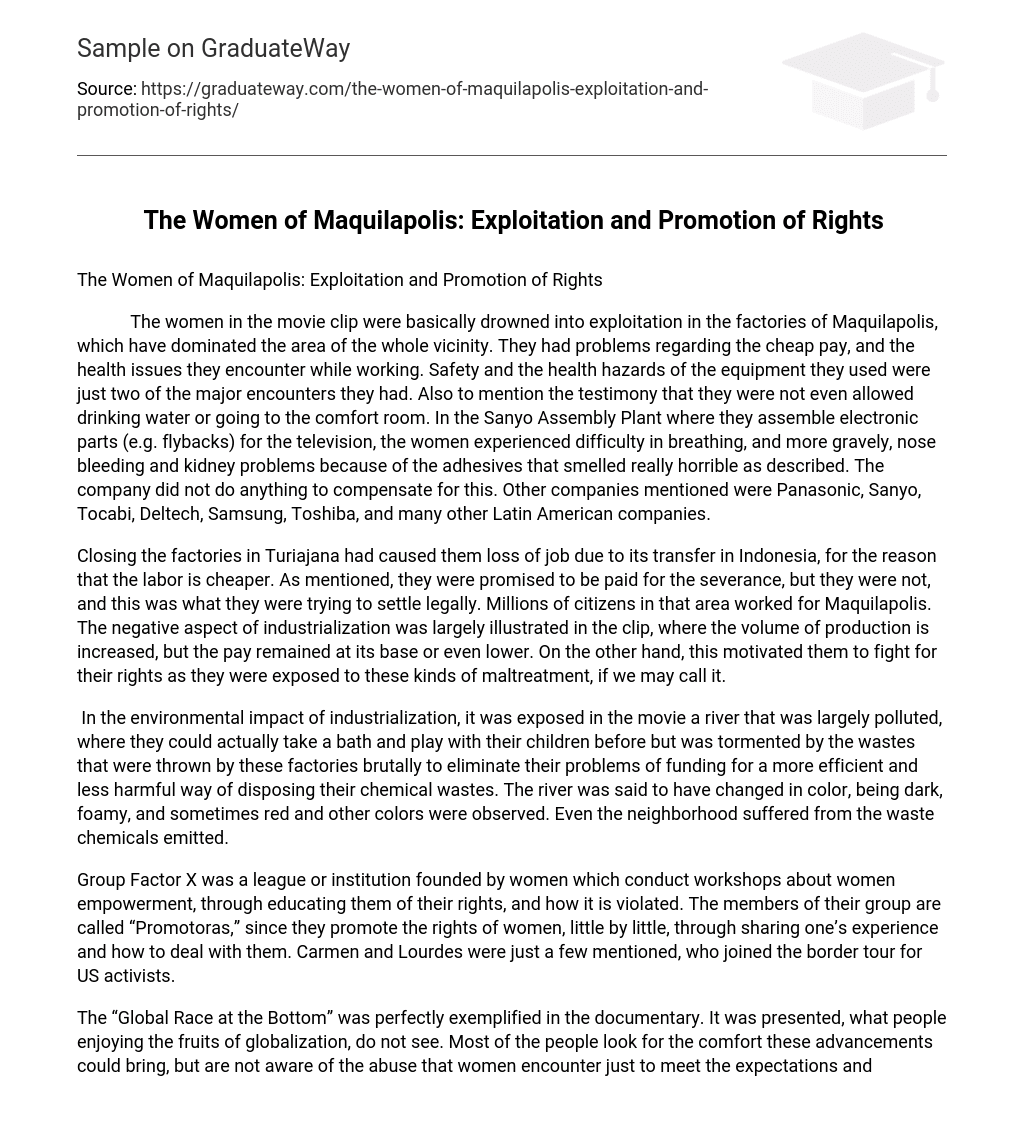The women in the movie clip were basically drowned into exploitation in the factories of Maquilapolis, which have dominated the area of the whole vicinity. They had problems regarding the cheap pay, and the health issues they encounter while working. Safety and the health hazards of the equipment they used were just two of the major encounters they had. Also to mention the testimony that they were not even allowed drinking water or going to the comfort room. In the Sanyo Assembly Plant where they assemble electronic parts (e.g. flybacks) for the television, the women experienced difficulty in breathing, and more gravely, nose bleeding and kidney problems because of the adhesives that smelled really horrible as described. The company did not do anything to compensate for this. Other companies mentioned were Panasonic, Sanyo, Tocabi, Deltech, Samsung, Toshiba, and many other Latin American companies.
Closing the factories in Turiajana had caused them loss of job due to its transfer in Indonesia, for the reason that the labor is cheaper. As mentioned, they were promised to be paid for the severance, but they were not, and this was what they were trying to settle legally. Millions of citizens in that area worked for Maquilapolis. The negative aspect of industrialization was largely illustrated in the clip, where the volume of production is increased, but the pay remained at its base or even lower. On the other hand, this motivated them to fight for their rights as they were exposed to these kinds of maltreatment, if we may call it.
In the environmental impact of industrialization, it was exposed in the movie a river that was largely polluted, where they could actually take a bath and play with their children before but was tormented by the wastes that were thrown by these factories brutally to eliminate their problems of funding for a more efficient and less harmful way of disposing their chemical wastes. The river was said to have changed in color, being dark, foamy, and sometimes red and other colors were observed. Even the neighborhood suffered from the waste chemicals emitted.
Group Factor X was a league or institution founded by women which conduct workshops about women empowerment, through educating them of their rights, and how it is violated. The members of their group are called “Promotoras,” since they promote the rights of women, little by little, through sharing one’s experience and how to deal with them. Carmen and Lourdes were just a few mentioned, who joined the border tour for US activists.
The “Global Race at the Bottom” was perfectly exemplified in the documentary. It was presented, what people enjoying the fruits of globalization, do not see. Most of the people look for the comfort these advancements could bring, but are not aware of the abuse that women encounter just to meet the expectations and demands of the fast pace of our world today. The federalist point of view and productivity were emphasized, that being a factory worker became a commodity, that women did not have choice but to become one. The result of the greed is the minimization of the benefits and the regulatory standards, which can be equated to betrayal of public interest (Jordana and Levi-Faur, 2004, p. 97). In the case of these factory workers, they were underpaid, no health benefits, deprived of personal hygiene, and sickened by the unfavorable working environment.
Fighting for their rights was like giving up their own lives, because this was the only work they know for their families to survive, especially for them who are mostly single parents, and they were treated as objects of labor. A legal adviser exposed them to a reality that they may be oppressed because whom they fight with are powerful, world-renowned companies, but nobody stopped them from taking what was due to them.
References
Jordana, J., & Levi-Faur, D. (2004). The Politics of Regulation: Institutions and Regulatory Reforms for the Age of Governance. Massachusetts: Edward Elgar Publishing.





